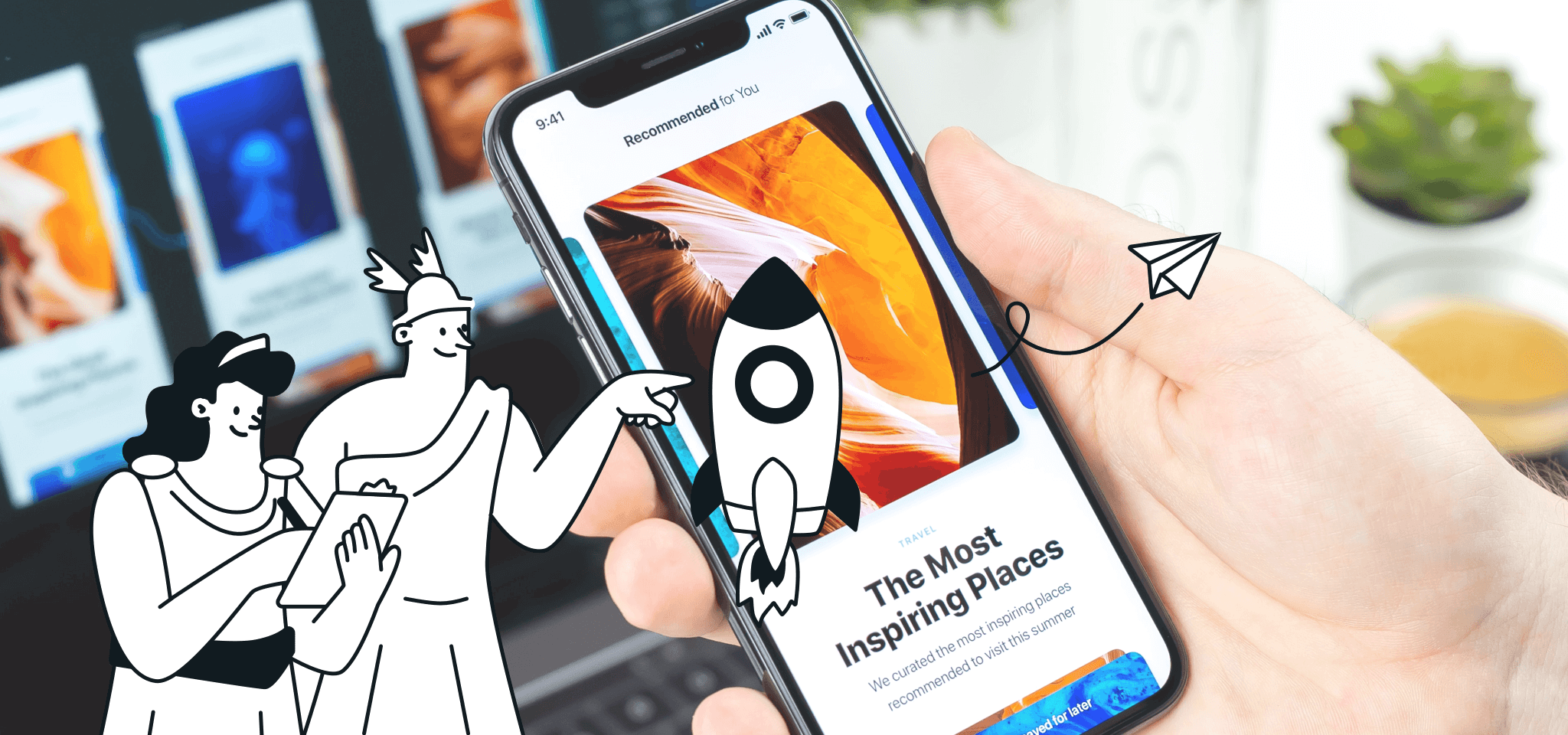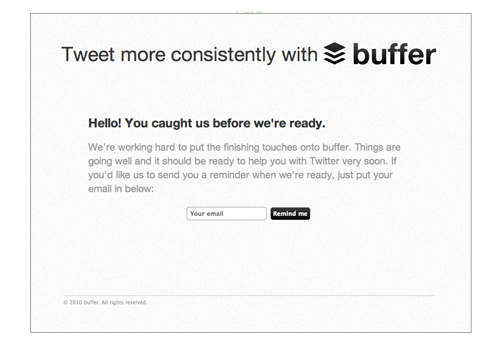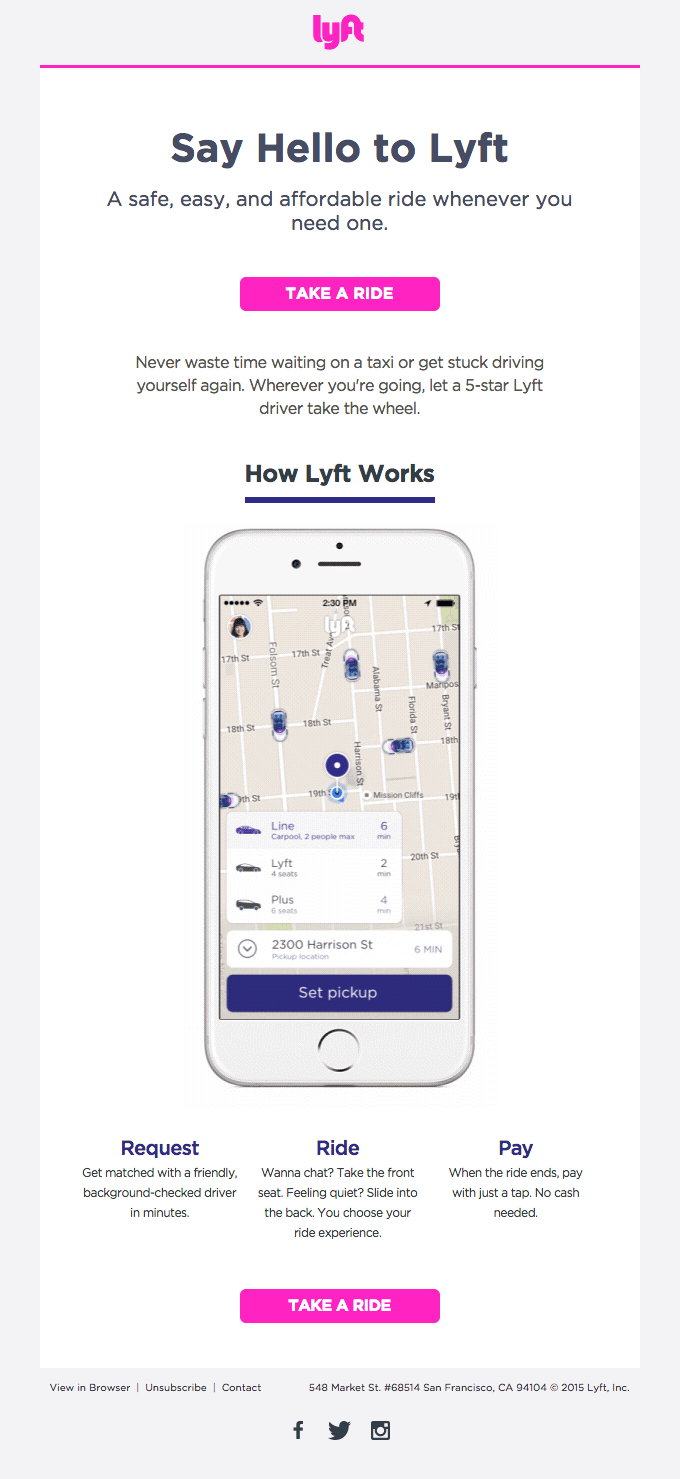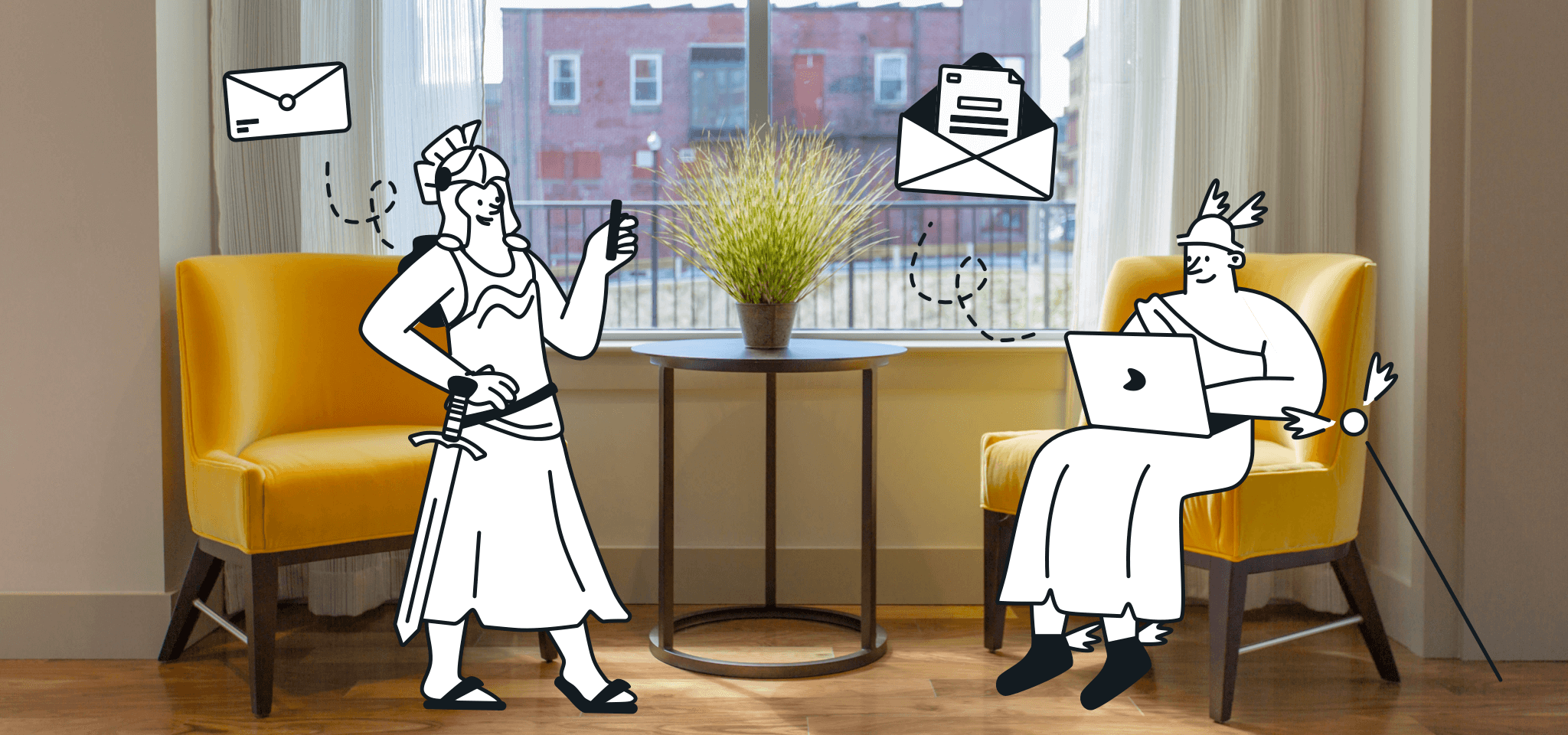Email Best Practices
Leveraging email in your mobile app
Learn how email marketing can help you grow your app from the day you come up with the idea, all the way to the day you launch the app.

PUBLISHED ON
Have you ever looked at all the apps on your phone and wondered what went into making them? Maybe you’re on track to start building your own. But, whether you’re building an app to support a larger project, or building the next big thing in the App Store, you’ll quickly realize that email is a much larger part of your user’s experience than you expected.
Starting even before you sit down to build your app, all the way to scaling and monetizing your app, email plays a pivotal role in its success. It can be used as a tool to feel out what interest there might be in the idea behind your app, then used to promote and engage users before and after launch, and finally improve engagement and user experience on an on-going basis.
So let’s dive in and see how email can help drive interest, downloads, and most elusive in the app universe - recurring users.
Table of content
Use an email to educate about the app
Introduce them to a feature they may not know about
What are behavioral emails?
Email reports using data from the app
Design your user experience, not just your app
Why email marketing?
Before anything, we’re going to set the stage by telling you why email should play a crucial role in your app’s marketing. As we’ve said many (many) times, email is the most personal and impactful medium for communicating with users and prospective users.
With a return of $40 for every $1 spent, email marketing continues to drive far better engagement than any other channel, including keyword advertising (17:1) or banner advertising (2:1).
Email also allows you to interact with your users in a secure and private way. You can easily send important communications like password resets, billing information, usage reports, and more to your users.
If you have any plans to communicate with your users outside of the app, make sure you include email in your plans. If you don’t, you’ll not only miss out on improved engagement, but you may also take a hit in the customer experience department.
Using email collection as a proof of concept
Everyone from your doctor to your grandmother has an idea for an app. It’s why we have apps like Drake Shake, which adds a photo of Drake to any photo, by just shaking your phone.
Brilliant, right? We’re wondering why we didn’t come up with that one ourselves.
And it’s getting easier than ever to build apps. With intuitive platforms popping up everywhere letting you create a basic app without any code, anyone can make an app and put it on the market.
But like anything else, just because you built it doesn’t mean they’ll come.
Regardless of whether you’re a student looking to come up with the next big thing, or a large company considering a new app launch, you should first validate and confirm that the idea behind your app has some traction.
Email is going to make this easy for you.
You can do this by launching a simple landing page with some branding and key messages, and an email collection form. If your idea and your message resonate, people will sign up for your list. If your list is big enough, it’s a good indicator that you should probably build your app.
Brands as big as Buffer created a landing page just like this to validate their idea before ever launching their real product. They launched a landing page with a logo, some key messages about the product they wanted to build, and a single call-to-action - “Plans and Pricing”.

If you were intrigued enough to explore plans and pricing, you would have been sent to a page that said “Hello! You caught us before we’re ready”.

Now, Buffer knows that X number of people were interested in looking at pricing, and Y number of people were so interested in their product that they provided an email. That’s some invaluable data before launching a new product or app.
There are an endless number of apps like Hipster that did the same thing to simply tease an idea, validate interest, and then build an email list to begin to nurture future users.

Harry’s Razor’s, while not an app, is a great example of how to build a list of excited customers/users pre-launch and then use this same audience to drive viral expansion.
Ahead of the launch, Harry’s rewarded users who invited their friends and family by gifting them with free products. With one click, users could invite others to join the list. You can also easily integrate an email service provider like Mailjet into your website to trigger these personalized emails immediately. Just think, wouldn’t you be much more likely to try out a product if your best friend told you to give it a go?

You can use the same logic in your app to create a viral effect. What can you offer to users to encourage them to share? A free product? Free credits? Early access to the app? Social credit?
In fact, this is such a popular approach to product validation that Product Hunt built an entire service for users to create lead capture landing pages for this specific purpose. There are even apps like Sparetoolz that help you prep for launch with an easy email list collection tool to (1) validate the idea, and (2) ensure that when the product is ready to launch, you have an engaged list of emails you can promote to right away.
Email in your app's onboarding process
Use an email to educate about the app
As you gear up for launch day, you might want to use your pre-launch email list to invite users to the beta launch or full launch of your app. We’re going to throw a pretty heavy statistic at you, so are you ready? Here it is: 80% of users delete an app they downloaded within just three days. Keeping this in mind, it’s important to optimize those first three days for on-going success. And email is one of the ways to do this.
Giving them a little reminder about why they signed up for your list in the first place is a good place to start. As Lyft does below in it’s introductory email, make it clear (1) what your app does, (2) why it will benefit the user, and (3) how they can get started NOW.

Introduce them to a feature they may not know about
Getting a contact from your email list to actually download the app is one thing. Getting them use your app daily (or weekly) is a whole other beast. One great way is to use email promotions to introduce, or re-introduce, key features in the app.

For example, Swarm is an app that allows you to easily share your location with friends. An important component of Swarm’s email marketing efforts included an early promotional campaign to new users to introduce them to a new feature. In this case - messages.
Note that this email has one message and one goal.
You can use an email automation tool and transactional email API to automate these messages to be sent based on things like “days since the user signed up” to ease your customers into your app’s experience.
Use behavioral emails to increase active users
What are behavioral emails?
Behavioral emails are personalized emails related to a behaviour taken on your app. They can be a great way to not only increase engagement in your app, but also be a bit of a bonus in the overall experience.
For instance, by using a transactional email tool, you can trigger emails based on actions in the app, achievements, messages, and more.
Email reports using data from the app
A great example of this is an app like Strava, which is a fitness app that sends emails based on milestones achieved, daily or weekly reports, and more.

These are one-to-one messages that are personalized specifically for the user that has received it. It could be anything from fitness data from Strava, to mileage data from brands like Lyft or MileIQ. MileIQ is an app that monitors driving miles to make expense reporting seamless for people who drive for work.
Apps like Duolingo do a great job of using behavioral emails, not for generic reporting, but to encourage re-engagement. Their email reports show progress meters that pull on basic psychology to incentivize action. If you haven’t opened the app in a while, you may not know how close you are to a new achievement. Email triggers may be the only way to encourage action. And let’s be honest, who doesn’t want to make a new achievement.

Design your user experience, not just your app
At the end of the day, your app is the center of a larger ecosystem that your user will interact with. When you get started on building your app, or even thinking through the wireframe of what it could be, take a step back and think about the many touch points you’d like to have with your customers.
Think about where email can not only improve your ability to communicate with your users, but also improve your user's own experience. What things are better said by email than, say, a push notification? When should you remind users of a cool feature in your app? When do users need a little encouragement to come back?
Taken all together your app may stand a chance. If Drake Shake can make it to the top of the app store, anyone can. :)
Happy building!
What app do you think uses email marketing well? Let us know on Twitter.








